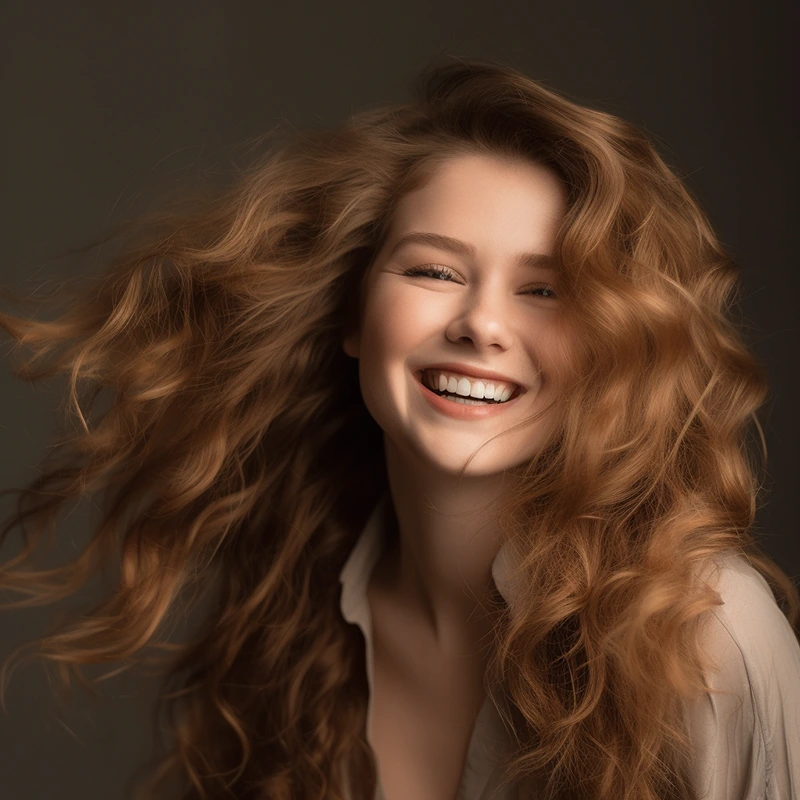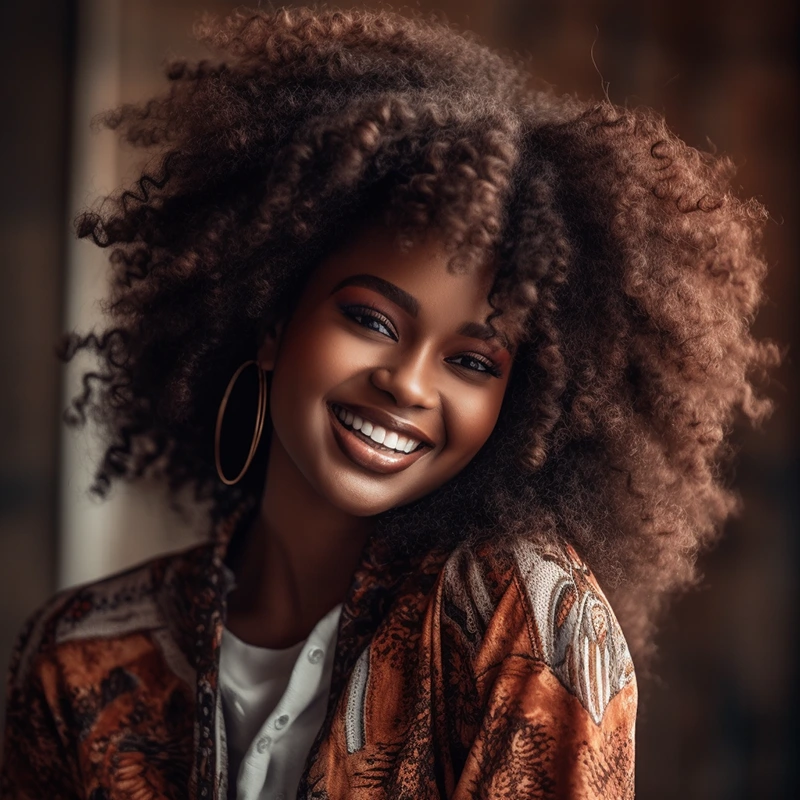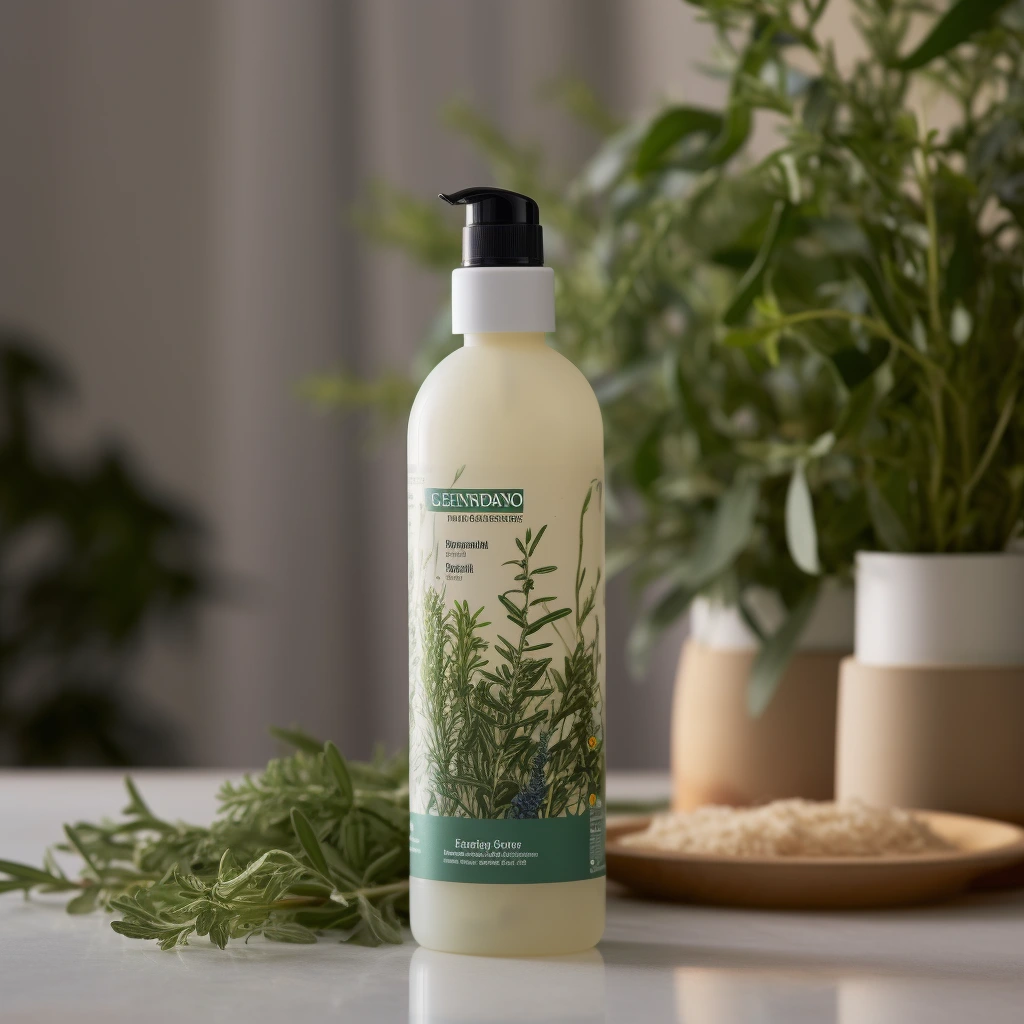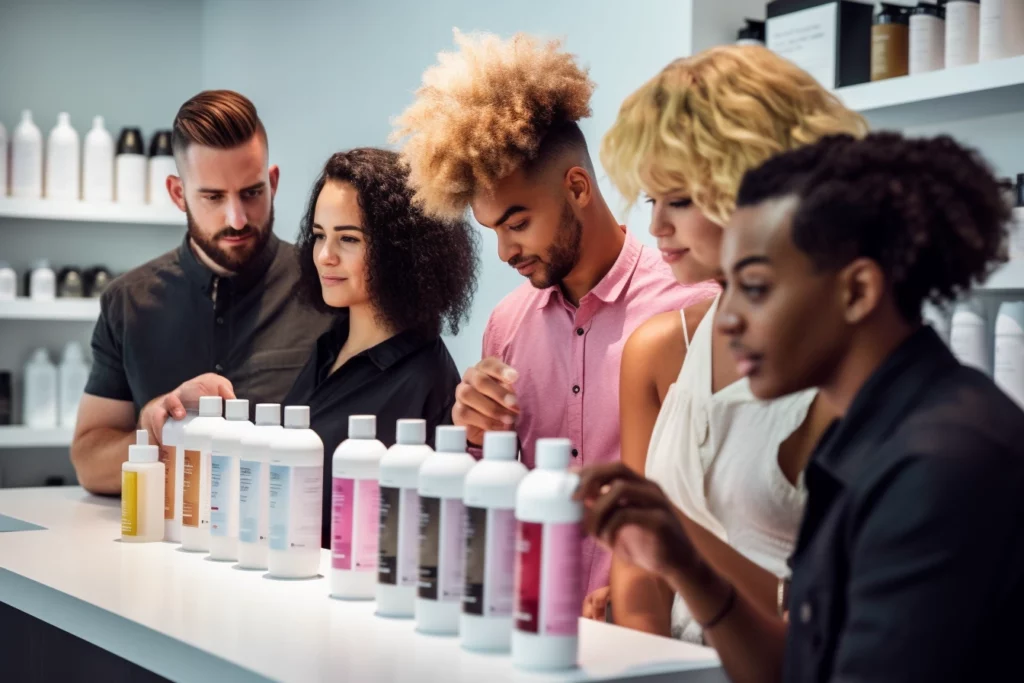Introduction
Just as a doctor prescribes medication tailored to a patient’s specific needs, formulating an effective and successful shampoo for a particular hair type requires a deep and close look at the individual’s hair characteristics. This is far from a one-size-fits-all situation.
As a shampoo formulator, understanding your target consumers’ hair type and how shampoo formulation affects hair health is essential for achieving optimal results. This comprehensive guide will help you learn about hair structure, types, and the crucial factors that determine the best shampoo formulation for you. By the end, you’ll have the knowledge to create a personalized hair care routine for healthier, more beautiful hair.
Human Hair Structure and Types
Hair Structure
Human hair consists of a hair shaft and a hair root, with the shaft being the visible part that protrudes from the skin, while the root is located in the skin and extends deep into the skin layers. The hair follicle surrounds the hair root and connects to a sebaceous gland, which produces oil to keep the hair lubricated.
The hair shaft consists of three layers: the cuticle, cortex, and medulla.
- Cuticle: The outermost layer of the hair shaft is called the cuticle. It is composed of overlapping, scale-like cells that protect the hair shaft and help to maintain its shape. The cuticle also plays a role in regulating the amount of moisture that enters and exits the hair shaft.
- Cortex: The cortex is the middle layer of the hair shaft and is responsible for the hair’s strength, elasticity, and color. The cortex contains the pigment melanin, which determines hair color. It also contains proteins called microfibrils, which give the hair its strength and elasticity.
- Medulla: The innermost layer of the hair shaft is called the medulla. It is a hollow core that runs through the center of some hair shafts, but is absent in others.

Source: InformedHealth.org [Internet]. Cologne, Germany: Institute for Quality and Efficiency in Health Care (IQWiG); 2006-. What is the structure of hair and how does it grow? 2019 Aug 29. Available from: https://www.ncbi.nlm.nih.gov/books/NBK546248/
The hair follicle is the structure in the skin that produces hair. The hair bulb is the part of the hair follicle where hair growth begins. The papilla, a small, cone-shaped structure at the base of the hair bulb, contains blood vessels that supply nutrients to the hair follicle.
The sebaceous gland, located near the hair follicle, produces sebum, a natural oil that helps to moisturize and protect the hair and scalp. The arrector pili muscle, a small muscle attached to the hair follicle, contracts in response to cold or emotional stress, causing the hair to stand up (also known as goosebumps).
Hair Types
Human hair can be classified in various ways, but the most common methods include categorization based on ethnicity, oiliness or dryness, and curliness.
By ethnicity
In academic literature, hair type is often associated with ethnicity and is categorized into three main classifications based on race: Asian hair, Caucasian(or European) hair, and African hair.
- Asian hair is typically straight, with a mostly round cross-section. The cuticle layer of Asian hair is thicker than that of Caucasian hair, which can make it more challenging for chemical treatments to penetrate the hair shaft.
- Caucasian hair is known for its wide variety of curves, including curly, wavy, and straight types. Its oval-shaped hair strands can display a diverse range of pigments, from blond to dark brown. Caucasian hair tends to have the highest density of hair on the scalp.
- African hair, on the other hand, tends to be curly and kinky, with the flattest oval cross-section. This hair type is prone to breakage. The high degree of curliness or kinkiness of this hair type, can lead to an oily scalp but very dry hair due to the difficulty of natural oils to travel down the hair shaft.
By oiliness or dryness
This is the most common way of hair classification used by formulators and marketers in the hair care industry. There are essentially three types of hair – oily, dry, and normal hair. People with oily hair often have an overproduction of sebum, which can make the hair look greasy and may lead to scalp issues. On the other hand, people with dry hair often have a lack of natural oils, which can lead to dull, brittle hair. People with normal hair have more balanced hair.
By curliness
Curliness is a simple and commonly used way to classify hair types based on appearance. Hair can be categorized as straight, wavy, curly, or kinky. However, the curl pattern of hair is actually determined by the shape and structure of its fibers.
The three main categories of human hair types based on curl pattern are:
Straight hair: This hair type has a completely straight texture with no curl or wave pattern. It is generally considered to be the thickest and strongest of all hair types.

Wavy hair: This hair type has a slight wave pattern that ranges from loose waves to more defined S-shaped waves. It is usually finer than straight hair and can be prone to frizz.

Curly hair: Curly, kinky, and coily hair types all have distinct curl patterns that can range from loose curls to tight ringlets or tightly coiled zigzag shapes. It is the thinnest and most delicate of all hair types and is often prone to dryness and breakage.

Formulating Shampoo for Different Hair Types
A deep understanding of different hair types, combined with thorough knowledge of shampoo ingredients, empowers formulators to create customized formulations that cater to each hair type.
Shampoo Ingredients and Their Functions
To cater to different hair types and needs, various ingredients are used in shampoo formulations. Here are some of the key ingredients and their roles:
- Surfactants: Surfactants are the primary cleaning agents in shampoos. They help remove dirt, oil, and debris from the hair and scalp. Common surfactants include sodium lauryl sulfate (SLS), sodium laureth sulfate (SLES), and ammonium lauryl sulfate (ALS). Milder surfactants, like cocamidopropyl betaine and sodium cocoyl isethionate, are used for sensitive or dry scalps.
- Conditioners: Conditioning agents help to smooth the hair cuticle, making it more manageable and less prone to tangling. Examples of conditioning agents include silicones (e.g., dimethicone), fatty alcohols (e.g., cetyl alcohol), and cationic polymers (e.g., PQ-7, PQ-10, etc.).
- Moisturizers and humectants: These ingredients help to attract and retain moisture in the hair shaft, keeping it hydrated and healthy. Glycerin, panthenol, and hyaluronic acid are common moisturizers and humectants used in shampoos.
- Proteins: Hair is primarily composed of keratin, a type of protein. Protein-based ingredients, like hydrolyzed keratin, silk, or wheat, can help to strengthen and repair damaged hair.
- Natural oils and butters: Natural oils, like argan oil, coconut oil, and jojoba oil, as well as butters like shea and cocoa, can provide added moisture and nourishment to the hair.
- Thickeners and stabilizers: These ingredients help to give the shampoo its desired consistency and texture. Examples include xanthan gum, guar gum, and cellulose derivatives.
- Preservatives: Preservatives are used to prevent bacterial growth and extend the shelf life of the product. Common preservatives include parabens, phenoxyethanol, and benzyl alcohol.
We have posted another in-depth article about shampoo ingredients and their functions: A Comprehensive Guide to Shampoo Ingredients: Understanding the Role of Each Component in Formulation.
Customizing Shampoo Formulations for Different Hair Types
To ensure that your shampoo formulation caters to a specific hair type, consider incorporating the following ingredients and attributes:
- For oily hair: Opt for a shampoo with stronger surfactants, like SLS or SLES, to effectively remove excess oil. You may also include ingredients with astringent properties, such as tea tree oil or witch hazel, to help regulate sebum production.
- For dry hair: Choose milder surfactants, like sodium cocoyl isethionate and amino acid-based surfactants, to prevent further stripping of natural oils. Include moisturizing and humectant ingredients, such as glycerin, panthenol, or aloe vera, to help retain moisture. Natural oils and butter can also provide added nourishment and hydration.
- For normal hair: A balanced shampoo formulation containing mild to moderate surfactants and conditioning agents should suffice. You may also include proteins and natural oils for added strength and shine.
- The hair curl pattern needs also to be taken into consideration: For straight hair, the natural oils produced by the scalp can travel down the shaft easily. So a shampoo for straight hair, especially fine or thin straight hair, doesn’t need an abundance of heavy ingredients like oil, butter, and cationic emulsifiers; For curly or kinky hair: Focus on moisture retention and conditioning. Look for mild surfactants, humectants, and conditioning agents. Natural oils, like avocado or coconut oil, can help nourish and define curls.
Other Factors To Consider
When formulating a shampoo, it’s essential to consider various factors beyond hair types to create well-rounded products. These factors include:
- Scalp conditions: Addressing specific scalp issues, such as dandruff, eczema, or psoriasis, can be essential for overall hair health. Including soothing, anti-inflammatory, or antifungal ingredients can help alleviate these conditions.
- Environmental factors: Harsh weather conditions, pollution, and hard water can impact hair health. Shampoos with antioxidants and chelating agents can protect hair from environmental stressors.
- Hair color and treatments: Chemically treated hair, such as dyed, permed, or relaxed hair, requires specialized formulations. Gentle surfactants and color-protecting or repairing ingredients can maintain hair integrity.
- Age-related changes: As people age, hair texture, density, and moisture levels change. Formulating shampoos that address age-related concerns, such as thinning, dryness, or brittleness, can provide targeted care for specific age groups.
- Lifestyle and personal preferences: Frequency of hair washing, preferred scents, and ingredient choices (e.g., vegan, organic, sulfate-free) can influence shampoo formulation. Catering to these preferences creates a personalized hair care experience for customers.

By considering these factors, you can develop shampoos that cater to a wide range of hair care needs, ensuring better customer satisfaction and overall hair health.
Conclusion
For shampoo formulators, accurately identifying the target consumers’ hair types is of utmost importance, especially in terms of oiliness and dryness, as well as curl patterns, as these are the key factors that determine specific hair care needs. By combining a deep understanding of different hair types with a thorough knowledge of the functions and characteristics of various shampoo ingredients, formulators can craft tailor-made shampoo formulations that align with the unique requirements of their target customers.
Taking these factors into consideration not only allows you to create customized formulations that cater to the specific needs of each hair type but also ensures optimal hair health and satisfaction for your customers. This holistic approach to shampoo formulation is what sets successful formulators apart in the competitive world of hair care, ultimately leading to happy, loyal customers with healthier and more beautiful hair.






